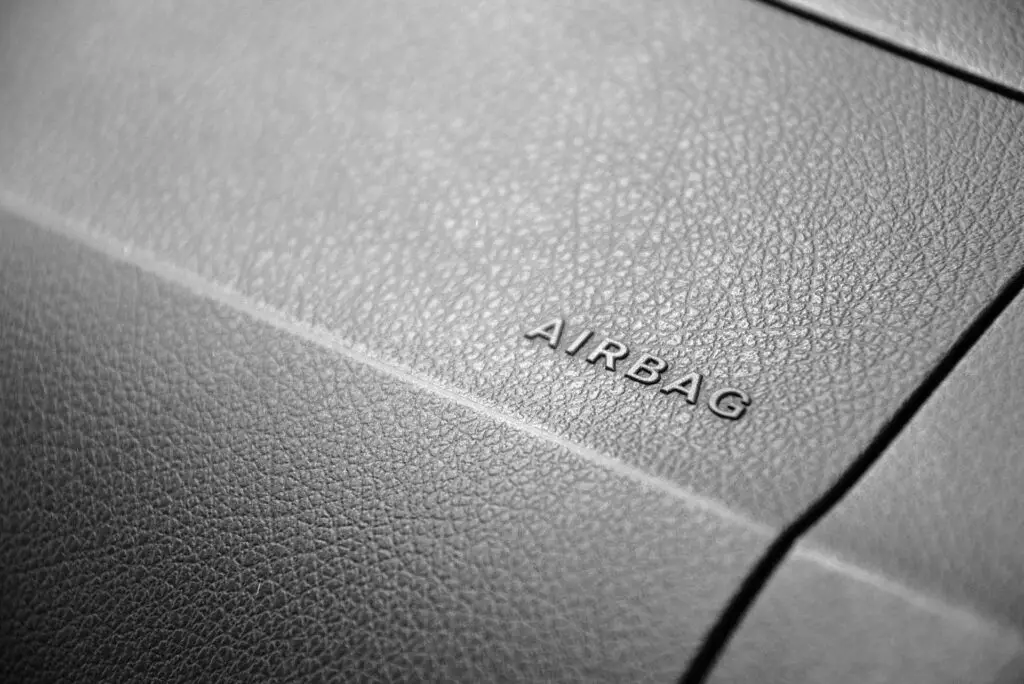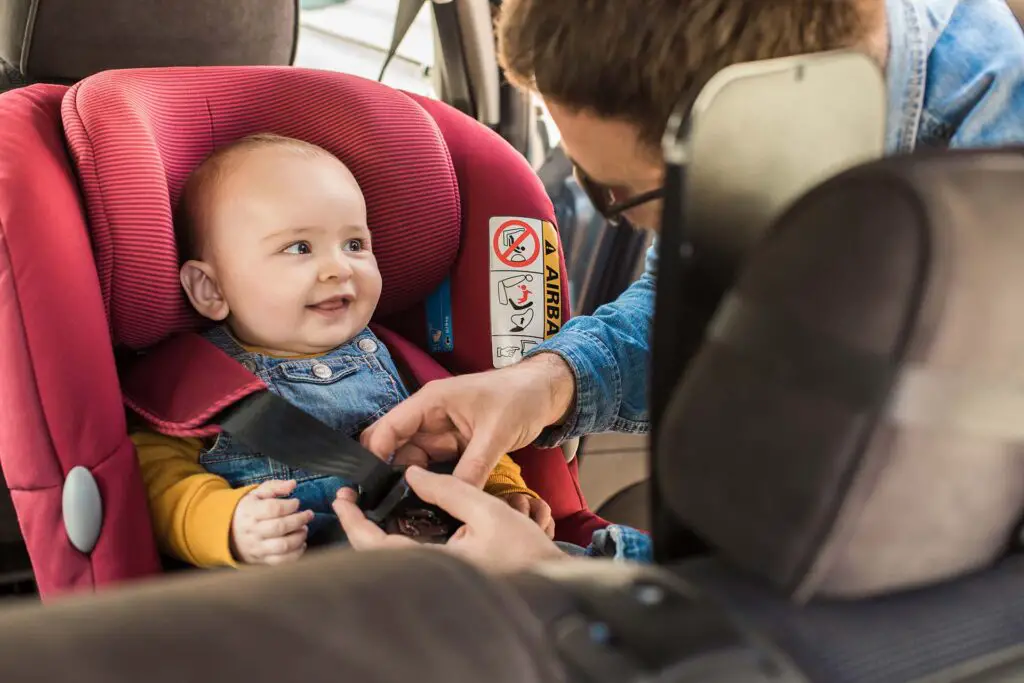Buckle up and brace for impact because today we’re cruising down memory lane, exploring the car history of seatbelts and airbags. It’s a journey filled with twists, turns, and life-saving innovations. From rudimentary straps to sophisticated safety systems, let’s unpack how these everyday heroes evolved to become the silent guardians in our beloved rides.
Back to the Start – Unraveling the Early Days of Car Safety Features
As the vehicle evolution unraveled, concerns regarding automotive safety standards were not as prominent as they are in modern cars. However, four-wheelers always brought with them inherent risks.
Initially, safety considerations were secondary, as the novelty and utility of early automobiles overshadowed concerns about accidents. This began to change as their popularity grew, leading to plenty of vehicle safety innovations we know and love today.
The Seatbelt Design Evolution Has Had Quite a Long Journey
According to the National Highway Traffic Safety Administration (NHTSA), wearing a seatbelt can reduce the chances of injury by a whopping 50%, cementing it as one of the most important driver’s responsibilities. However, this smart safety addition was not always deemed necessary, even though it was one of the early car safety measures introduced back in the late 1800s.
What started as a way to restrain pilots inside their gliders became a vehicle safety mechanism with the American inventor Edward J.Claghorn, who created the first patent in 1885. This early iteration was designed to safeguard passengers in New York City taxis. Gradually, it became a staple of manufactured cars, aiming to ensure that drivers and passengers remained securely seated during transit.
The Airbag System Integration Is Actually a Somewhat Recent Addition
Compared to seatbelt development, airbags are a relatively recent addition when it comes to driver protection systems. The first commercial models were introduced in the 1970s, which was followed by a broader adoption across various markets.
Today, many modern vehicles are equipped with multiple airbags. The statistics clearly show that this fairly new addition plays a vital role in vehicle crash prevention, enhancing the safety of both drivers and passengers in various types of impact. According to the Insurance Institute for Highway Safety, driver fatalities are reduced by 29% in frontal crashes thanks to these safety devices – a number that literally makes the difference between life and death.

The History of Seatbelts and Airbags – What Was the Initial Public Reception?
Despite originating in different eras, the history of airbags and seatbelts shares a similar initial reception from the public – skepticism. People were hesitant to embrace these new additions to their vehicles, often viewing them as unnecessary or even intrusive. This skepticism stemmed partly from a lack of awareness about the potential life-saving benefits these features offered, and partly from a resistance to change in the traditional driving experience.
For seatbelts, their gradual integration into cars during the mid-20th century was met with a lukewarm response. Many drivers and passengers found them uncomfortable and restrictive, preferring freedom of movement over safety. Airbags, on the other hand, were rudimentary and not without faults, leading to a degree of mistrust. Plenty of airbag technology advancements had to happen for them to be thrust into the spotlight as standard and essential safety features.

Buckle Up – The Journey Towards Mandatory Seatbelt Laws We All Know Today
When it comes to automotive safety history, the turning point came with Nils Bohlin, a Swedish engineer working for Volvo in 1958. He revolutionized the game with the invention of the three-point seatbelt, which effectively secured both the upper and lower body, dramatically enhancing passenger safety. Up until then, the two-point belts often led to severe injuries in accidents.
This new design was not only more effective in protecting occupants in a crash but also simple to use and integrate into vehicle design. As it goes for most road safety enhancements, this aspect of user-friendliness is what usually prompts their rapid adoption by car manufacturers. And once it starts becoming the norm, laws and regulations always follow.
Click It or Ticket – Driving Without a Seatbelt Is Unimaginable Today
By 1966, American law mandated seatbelts in all vehicles, and most developed countries had similar requirements by 1975. However, putting these regulations in place and getting people to wear them were two different challenges.
It took extensive public awareness campaigns, epitomized by the National Ad Council’s long-running “Buckle Up” ads, to shift public attitudes. Gradually, states began enforcing seatbelt usage, and by 1995, nearly every state had implemented “Click it or Ticket” laws. Today, wearing a seatbelt is not just a legal requirement in virtually all states, but also an ingrained part of the driving culture, emphasizing safety and responsibility on the road.

The Integration of Airbag Systems Was an Equally Gradual Journey
When it comes to this younger safety device, the journey toward widespread adoption was also gradual yet transformative. Initially viewed as quite unusual, airbags became a staple in the automotive world slowly but steadily.
This transition was spearheaded by several key manufacturers who played a pivotal role in introducing and refining the technology. Here are the most notable mentions:
- Ford Motor Company – developed an experimental airbag fleet in 1971, making one of the earliest forays into this technology,
- General Motors – installed such devices into the 1973 Chevrolet Impala for government use, and later introduced them for public sales,
- Chrysler – made driver-state airbags standard in its 1988-1989 model range.
The Legal Airwaves That Followed This Intricate Evolution
The legal landscape surrounding airbags has evolved significantly over the years, reflecting the growing understanding of their importance when it comes to modern safety features in vehicles. Initially, there were no specific laws mandating airbag installation, which allowed manufacturers to be selective about offering them.
However, as awareness of their life-saving potential grew, so did the regulatory push for their inclusion in vehicles. The turning point came in the 1990s when airbags began to be recognized not just as a luxury or an optional safety feature, but as a necessary standard. This shift was catalyzed by both technological advancements and a growing body of research underscoring their efficiency in maximizing car accident survival rates.

Fast-Forward to Safety – Current Trends and the Future of Vehicle Safety
As we accelerate into the future, the landscape of vehicle safety is rapidly evolving, driven by innovative technologies and a deeper understanding of passenger protection. This journey refines existing features but also brings new ones to the table, further exploring the possibilities of automotive safety.
Seatbelt Innovations on the Horizon
The future of the seatbelt is shaping up to be an exciting fusion of comfort, convenience, and advanced technology. Ford, for instance, showcased an inflatable safety belt back in 2001, incorporating an airbag within the shoulder belt that instantly inflates during a collision.
Other manufacturers are also focusing on enhancing the user experience, aiming to make these safety devices more comfortable and easier to use. From cross-body safety belts to personalized seatbelt systems that adapt to individual body shapes, these advancements are on course to significantly transform our driving experience.
Expanding the Possibilities With Brand-New Airbag Designs
Modern airbag systems are no longer limited to front-impact scenarios – they now encompass a variety of types, including side and knee. The focus is on expanding coverage and precision, ensuring that these devices can provide optimum protection in a wider range of collision scenarios.
With advancements in sensor technology and deployment algorithms, future airbags are expected to be more adaptive. This means they will be able to intelligently adjust to the severity of the crash, the size of the occupant, and even the specific accident dynamics.

The Vanguard of Vehicle Safety – Advanced Features in Modern Vehicles
Modern vehicles come equipped with comprehensive safety packages, a testament to the industry’s commitment to protecting drivers and passengers. These features, ranging from collision avoidance systems to advanced driver-assistance technologies, are more than just add-ons – they are integral components of the vehicle’s design.
Today’s car manufacturers have developed plenty of advanced features and implemented them into their safety packages. Here are some of the unavoidable picks:
- Adaptive cruise control – automatically adjusts the vehicle’s speed to maintain a safe distance from the car ahead, enhancing comfort and safety on highways,
- Blind spot monitoring – alerts drivers to vehicles in their blind spots, reducing the risk of side-swipe accidents,
- Lane departure warning systems – detect and warn the driver if the vehicle begins to drift out of its lane without signaling, helping prevent unintentional lane changes,
- Automatic emergency braking – senses potential collisions and automatically applies brakes if the driver does not respond in time, reducing the severity of crashes,
- Rearview camera systems – provide a live video feed of the area behind the car, making reversing safer and easier.
Making the Final Pit Stop in the World of Automotive Innovations
As we pull over at the final stop of our journey, it’s clear that the road ahead is brighter and safer than before. From the humble beginnings to the cutting-edge technologies paving the way today, the automotive industry has shifted gears towards an era where safety is not just an option but a priority. Here’s to a future where every journey, no matter how short or long, is a safe one.
Frequently Asked Questions About Seatbelts and Airbags
Can Old Cars Be Retrofitted With Modern Seatbelts and Airbags?
It’s technically possible, but it can be complex and costly. While upgrading seatbelts to more contemporary models is relatively straightforward, integrating advanced airbag systems requires significant modifications. It’s essential to consult with a professional to understand the feasibility and safety implications of such upgrades.
How Have Seatbelts and Airbags Improved Car Safety Ratings?
These devices have significantly improved car safety ratings by reducing the severity of injuries in accidents. Their combined use has been shown to drastically lower the risk of fatal injuries in crashes, making them pivotal in achieving high safety ratings for vehicles.
Are There Any New Materials Being Used in Seatbelt Production for Enhanced Safety?
Seatbelts are being made with stronger, more flexible fabrics that offer better force distribution during a crash. These material advancements contribute to the overall effectiveness and reliability of these safety systems.








